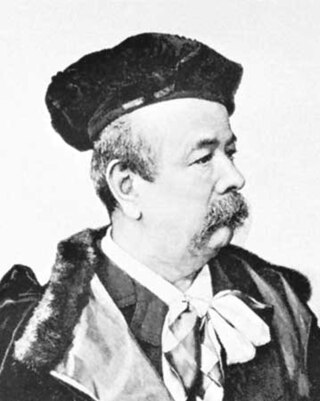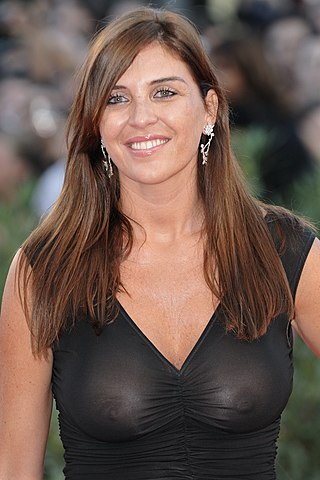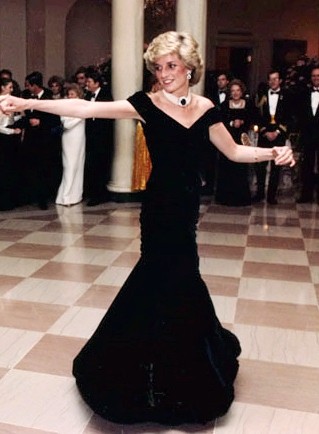Antony Price is an English fashion designer best known for evening wear and suits, and for being as much an "image-maker" as a designer. He has collaborated with a number of high-profile musicians, including David Bowie, Robert Palmer, Iva Davies, Steve Strange, and Duran Duran, but especially Bryan Ferry and Roxy Music, whose look was defined by Price's designs. The manner in which Price dressed – or in many cases, undressed – the "Roxy girls" on the covers of their albums helped to define the band's pop retro-futurism.

Sir Norman Bishop Hartnell was a leading British fashion designer, best known for his work for the ladies of the royal family. Hartnell gained the Royal Warrant as Dressmaker to Queen Elizabeth in 1940, and Royal Warrant as Dressmaker to Queen Elizabeth II in 1957. Princess Beatrice also wore a dress designed for Queen Elizabeth II by Hartnell for her wedding in 2020.

Charles Frederick Worth was an English fashion designer who founded the House of Worth, one of the foremost fashion houses of the 19th and early 20th centuries. He is considered by many fashion historians to be the father of haute couture. Worth is also credited with revolutionising the business of fashion.

Bruce Oldfield, OBE is a British fashion designer, best known for his couture occasionwear. Notable clients have included Sienna Miller, Catherine Zeta-Jones, Diana Ross, Charlotte Rampling, Jerry Hall, Joan Collins, Diana, Princess of Wales, Queen Noor of Jordan, Queen Camilla, the Duchess of Edinburgh and Queen Rania of Jordan.

A cocktail dress is a dress suitable at semi-formal occasions, sometimes called cocktail parties, usually in the late afternoon, and usually with accessories.

An evening gown, evening dress or gown is a long dress usually worn at formal occasions. The drop ranges from ballerina, tea, to full-length. Such gowns are typically worn with evening gloves. Evening gowns are usually made of luxurious fabrics such as chiffon, velvet, satin, or organza. Silk is a popular fibre for many evening gowns. Although the terms are used interchangeably, ball gowns and evening gowns differ in that a ball gown will always have a full skirt and a fitted bodice, while an evening gown can be any silhouette—sheath, mermaid, fit and flare, A-line, or trumpet-shaped—and may have straps, halters or even sleeves.

See-through clothing is any garment of clothing made with lace, mesh or sheer fabric that allows the wearer's body or undergarments to be seen through its fabric. See-through fabrics were fashionable in Europe in the eighteenth century. There was a "sheer fashion trend" starting with designer clothing from 2008. See-through or sheer fabric, particularly in skintone colours, is sometimes called illusion, as in 'illusion bodice' due to giving the impression of exposed flesh, or a revealing ensemble.
Catherine Walker was a French-born fashion designer based in London. Born Catherine Marguerite Marie-Therese Baheux in Calais, France, Walker is known for having supplied over a thousand garments for Diana, Princess of Wales.

Victor Frank Stiebel was a South African-born British couturier. A founder member of the Incorporated Society of London Fashion Designers, he was among the top ten designers in Britain during the war and post-war years. Among his more notable designs were the uniforms for the Women's Royal Naval Service in 1951 and the going-away outfit for Princess Margaret's wedding in 1960.

John Cavanagh was an Irish couturier of the 1950s and 1960s. A member of the Incorporated Society of London Fashion Designers (IncSoc), his style has been described as reflecting Parisian chic. He designed the wedding dresses for the Duchess of Kent in 1961 and for Princess Alexandra in 1963.
Georgina von Etzdorf (RDI) is a British textile designer whose eponymous fashion label was renowned for its luxurious velvet scarves and clothing accessories.

Lady Diana Spencer's wedding dress was an ivory silk taffeta and antique lace gown, with a 25-foot (7.6 m) train and a 153 yards (140 m) tulle veil, valued then at £9,000. It was worn at Diana's wedding to Charles, Prince of Wales in 1981 at St Paul's Cathedral. It became one of the most famous dresses in the world, and was considered one of the most closely guarded secrets in fashion history.

The "Travolta dress" is a dress once owned by Diana, Princess of Wales. It was worn for the first time at a gala dinner at the White House in November 1985. It is named after the American actor John Travolta, with whom the princess danced at the dinner.

Portrait of a Commander or A Commander Being Dressed for Battle is a portrait of an unknown man in plate armour, by Peter Paul Rubens. In July 2010 it was sold for £9 million by Christie's after Sotheby's turned it down, suspecting its authenticity as a Rubens. In December 2011, the portrait was placed on loan with the Metropolitan Museum of Art in New York.

Murray Arbeid (1935–2011) was a British fashion designer, known for his eveningwear. His notable clients included Princess Diana and Shirley Bassey. He once joked that if there were a Nobel Prize for creations in taffeta, he would have won it.
Kerry Taylor is a British businesswoman and London-based vintage fashion auctioneer. She created and owns the auction house Kerry Taylor Auctions, which she founded in 2003.

The "revenge dress" is an evening gown once worn by Diana, Princess of Wales. It was worn for the first time to a 1994 dinner at the Serpentine Gallery in Kensington Gardens. The garment has been interpreted as having been worn by Diana "in revenge" for the televised admission of adultery by her husband Charles, then Prince of Wales.

The fashion of Diana, Princess of Wales, had a substantial impact on the clothing industry; her style in the 1980s and 1990s led her to be considered a fashion icon.

Princess Margaret wore a cream Dior dress for her 21st birthday commemorations at Sandringham House in 1951. The off-the-shoulder silk gown was created and customised by designer Christian Dior, whom Margaret became closely associated with. The princess was captured in the piece, dubbed one of her favourite dresses, by Cecil Beaton, with the portrait becoming one of the most memorable royal photographs of the twentieth century. The dress has been cited as a part of fashion history, and has been a part of the permanent collection at the Museum of London since 1968.

A sari-inspired dress incorporates attributes of the Indian sari into its design. This includes how it drapes, its embellishment and colours.
















